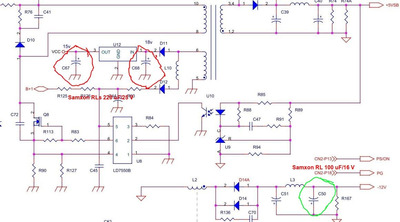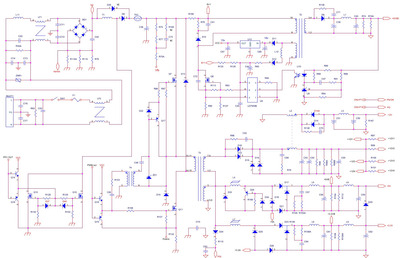Try sticking only with good Japanese brands like Rubycon, Panasonic, Nichicon, and United Chemicon.
SamWha is -kind of- junky... about on par with Samxon GF: they'll probably last you a few good years in the PSU, if not more... but eventually, you will have to re-recap the PSU again. In contrast, quality Japanese caps will be a lifetime repair.
As for Elite... they are so-so too. I've seen them used a lot in LCD monitors, and depending on which series we are talking about, they can be anywhere from very decent to not very good. Also depends if they have been abused with heat. The ones that weren't do OK. But again, if better quality caps are available to you, I'd go with those. The price difference should be negligible.
As for Jun Fu... Junk Fu is putting it nicely. I'm not a fan of this brand.
Here are some series that should work with your PSU from the above Japanese brands:
Rubycon: YXJ, YXH, YXM, PX (general purpose series), ZLQ*, ZL*
Panasonic: FC, FK, FR*, FM*, FS*
Nichicon: PW, PS, PM, PJ, HE, HD, HW*, HV*
United Chemicon: LXZ, LXY, LXV, KY, KYB, KZE, KZH*, KZM*
* : I've used some of these in PSUs before, but their ESR may be a bit too low for some PSUs.
Just follow what TheMobRules mentioned about matching the replacements. Indeed most PSUs tend to be quite flexible in what they can take, so it's not critical to match ESR or ripple current exactly. +/- 30 to 50% for the ESR is fine. Ripple current - higher than the original would be better... but in a pinch, lower RC from a high-quality Japanese cap manufacturer will usually do fine too. And as far as capacity and voltage ratings go: anywhere you see 6.3V caps, you can safely use 10V caps and vice versa. For capacity, going a notch up or down is usually not a problem either... though it's preferable to go up if the right size is not offered - e.g. putting a 1200 uF cap in place of a 1000 uF cap. Actually, even 1.5x higher capacitance won't hurt (if anything, higher capacitance is better... within reasonable limits, of course.)
In regards to the big cap(s) inside the PSU: does it have 2x 200V caps or one (or more) 400V/420V/450V caps. The former is typically accompanied by a voltage-selector switch and means the PSU does not have an APFC circuit. The latter means your PSU does have APFC. This is important to note, because APFC tends to stress the primary caps a lot more than non- or PPFC PSUs. So if the primary cap(s) is/are not a Japanese brand from the ones mentioned above (or Hitachi), you may want to replace it too. Just note that this/these large 400V/420V/450V caps will be rather expensive. My general rule is: if the PSU will be seeing a lot of use at high load and if the original cap was only rated for 400V (and especially if it's not a Japanese brand), then it's better to replace it - preferably with a cap rated for 420V or 450V. The primary cap doesn't have to be low ESR... and you will see that you probably won't find it in the above series. For this one, it just needs to be rated for 105C and as high ripple current as possible... and make sure that it physically fits inside your PSU too.

